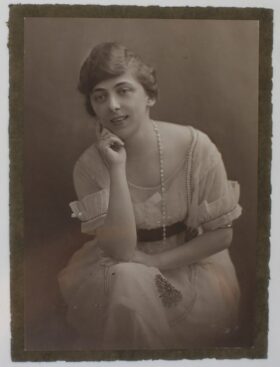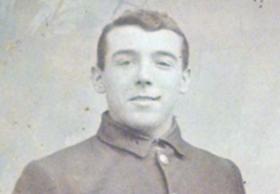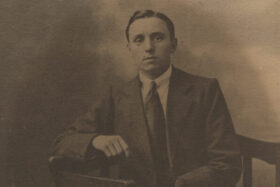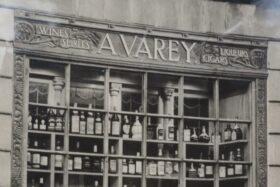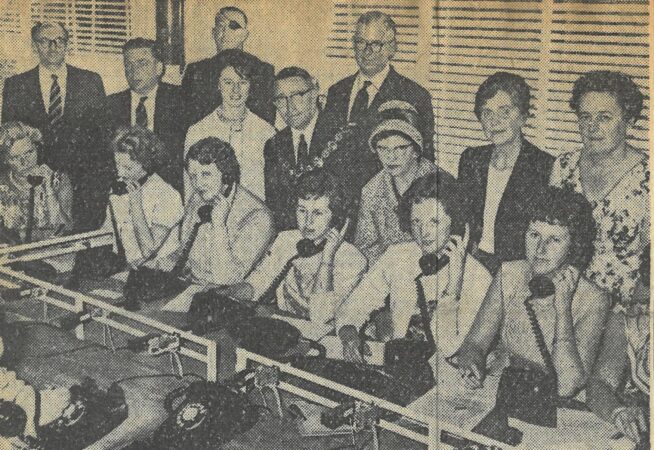
Women’s History: Pam Lomas and the G.P.O Telephonists
The General Post Office (G.P.O.) telephonists, otherwise known as the ‘hello girls’, were government-employed women responsible for dialling and transferring calls before the implementation of the automatic system.
They were often very capable and underpaid women, whose civil servant status first came into play in 1869 with the UK Government’s acquisition of the G.P.O.
Pam Lomas worked as a G.P.O. telephonist at the Congleton Telephone Exchange, located above the Post Office in Mill Street, between 1954 and 1961. She later worked at the Macclesfield Exchange from 1961 to 1964.
Below is a description of Pam’s life working at the exchange, designed to offer insight into local history and women’s contribution to the UK workforce during the mid-nineteenth century.
This information was taken from Pam’s memoir and newspaper clippings located in Congleton Museum’s collections.
Pam Lomas’s Story
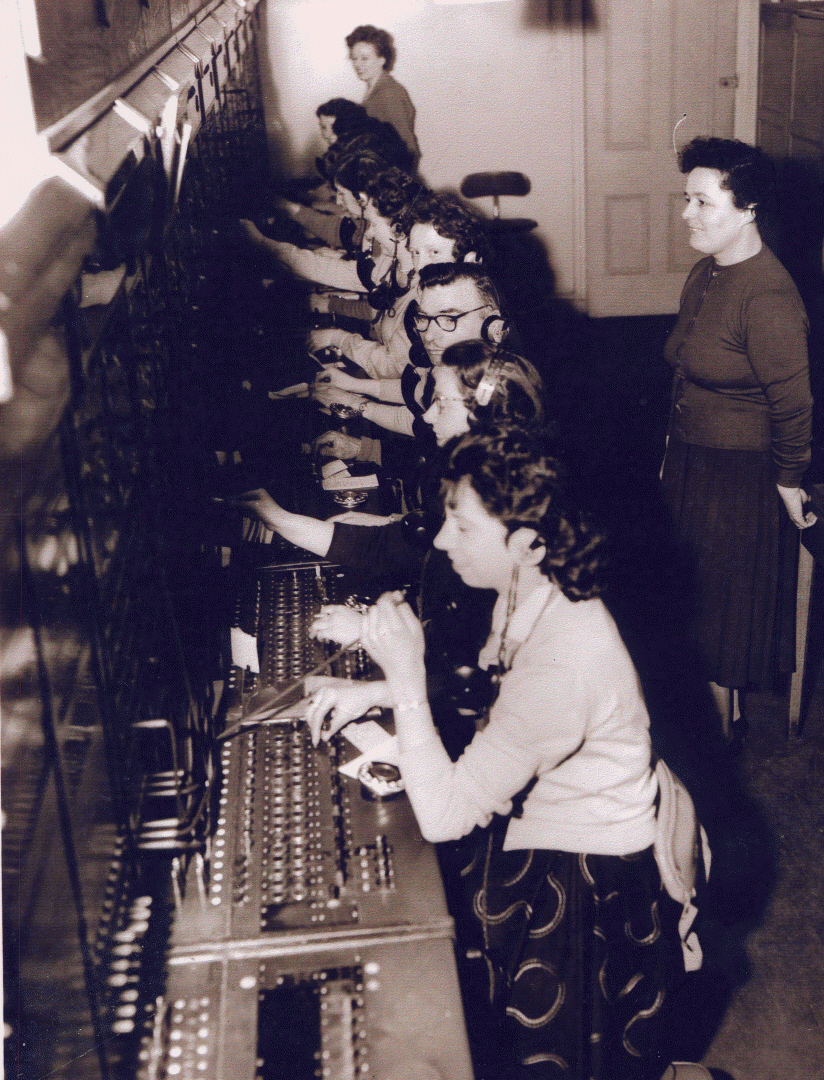
(Second from the front with black sleeves)
Pam started work at the Congleton Telephone Exchange in October 1954 after learning how to be a telephone operator at the General Post Office Centre in Manchester two months prior.
Trainees were tested for hearing and speech, and strong local accents were considered undesirable. Employees also had to have sharp hearing, clear speech, strong nerves, patience, diplomacy, and friendliness.
The work was often difficult and strenuous, with many having to continuously manipulate plugs and switches for hours on end. A comment in the local newspaper from a fellow operator—Mrs. Johnson—declared that there were ‘quite a lot of girls who started training and turned it down’ due to the ‘nervous strain’ of the position.
Trainees were not allowed to go home for the first two weeks and had to lodge in the area. They were paid a salary from the time they started training and also had to sign the Official Secret Act, which was a 1911 legislation designed to protect state secrets and official information.
Connecting Calls at the Congleton Telephone Exchange
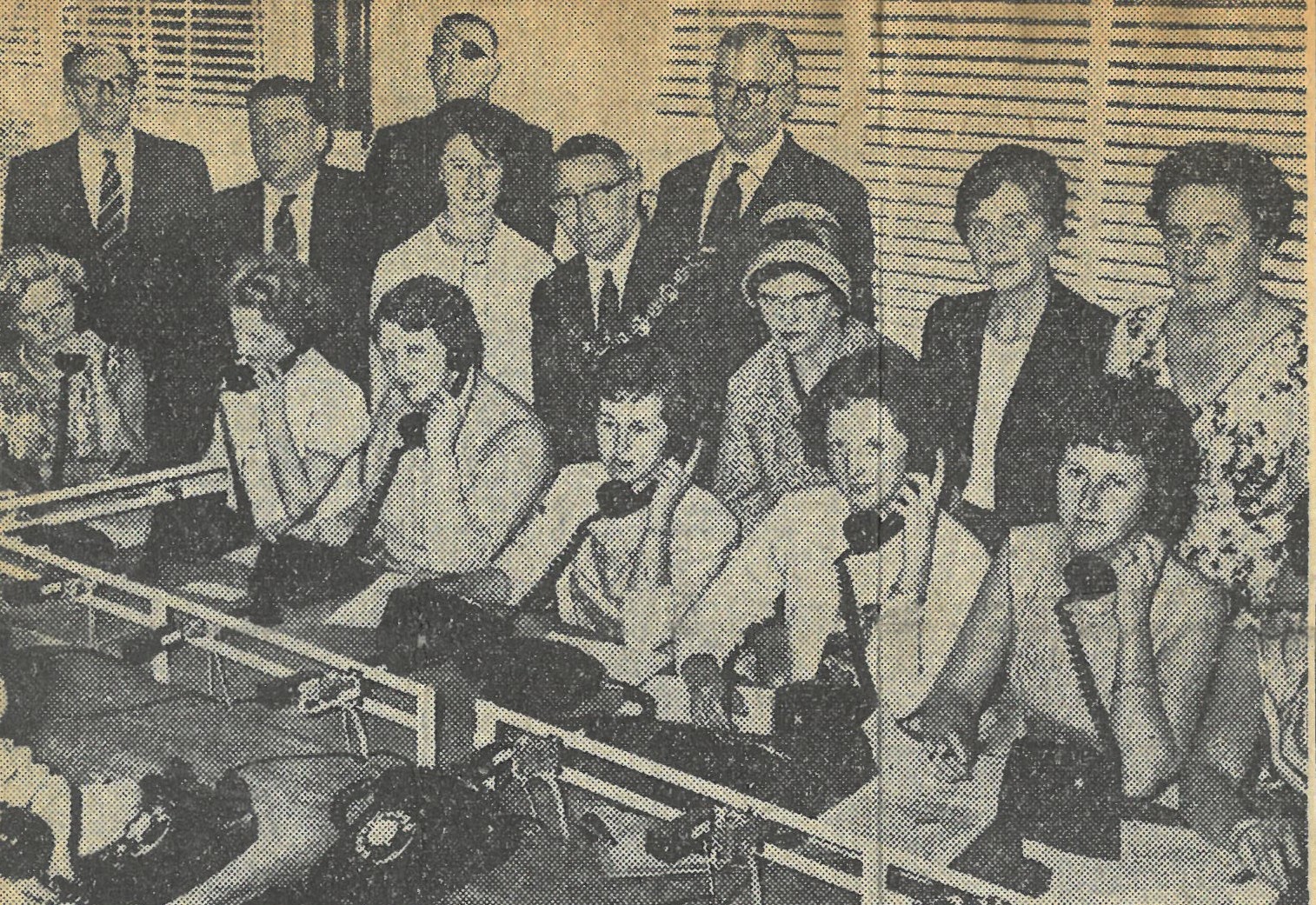
When Pam started at the Congleton Exchange, there were ten positions responsible for manually exchanging calls. Before automatic systems, this meant answering with ‘Number Please’ whenever the subscriber picked up the phone.
Each employee had a subscriber’s number in front of them, and a lamp would light up when they lifted up their receiver. The operator would then push a jack into the lamp socket with one plug, and with the other plug in the same row, connect it to the number required.
The subscriber would give the number they wished to call, and operators would then have to write it along with the subscriber’s own number on a docket.
Afterwards, the operators would pull back a key to ring the number.
They would then say, ‘I am trying to connect you’ if not answered in 30 seconds, and ‘I am still trying to connect you’ if still not connected after 1 minute. The operators would then end with ‘I am sorry, there is no reply’ and disconnect if the call failed.
The employees also had to write the start and finish time on long-distance or ‘trunk’ calls.
Women’s Lives at the Congleton Telephone Exchange
At Congleton, there was one supervisor, Mrs. Stella Joynson, and one exchange clerk, Miss Barbara Johnson, alongside approximately twelve operators.
Shift patterns varied from 8 am to 2pm, 9 am to 6 pm or 8:30 am to 5 pm.
The exchange paid employees from the time they entered until the end of their shift. Consequently, staff had to stay in the building at lunchtime and bring in their own food, which they could heat up using the provided stove.
Employees also had a 10-minute break in the morning and 20 minutes for lunch, both on a rota system. There were fewer staff on Saturdays, with around six operators in the morning and two in the afternoon. This caused a particular issue for Pam when there was a fire at Conlow Factory, as only herself and another operator were able to answer all the calls.
The night staff consisted of four male operators, who were all ex-servicemen. Sometimes one of the night staff, or a female operator from the Manchester Exchange, would also help during the day when short staffed.
There was also a ‘travelling supervisor’ that would arrive unannounced to ensure everyone was undertaking their tasks correctly.
An End of an Era
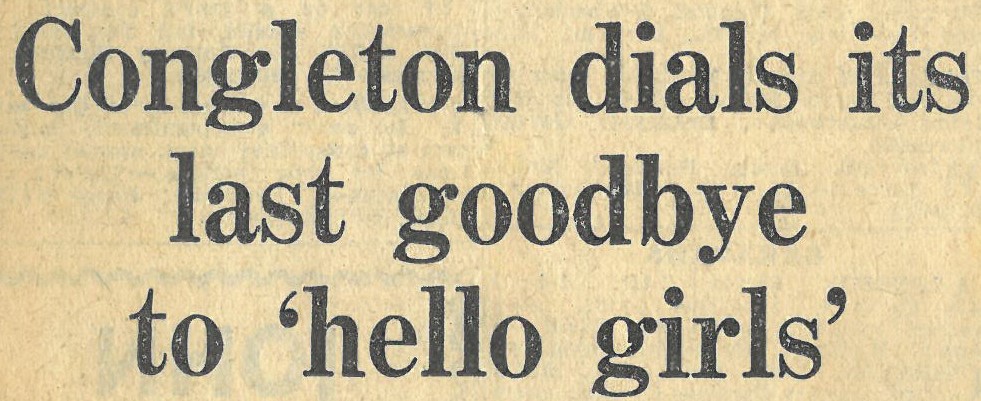
The Congleton telephone exchange turned automatic at its new premise in Silk Street in June 1961, around 15 years after the plans first came into play in 1946. With the help of hours of testing and calling the 1,325 subscribers to notify them of the changes, the switch between both systems was declared a ‘complete success’ by the G.P.O telephonists at the time.
The last person to make a call through the ‘hello girls’ was Mr. E. J. Tomlins, of Tomlins and Ford, LTD,. Buglawton, who was speaking to someone at Exeter when one o’clock struck the day the switch occurred.
The new equipment cost £100,000 and catered to 11,500 subscribers in 1961.
After the switch, subscribers could call using the dialer on their telephone, which included the new 999 emergency service we know today.
The Macclesfield Telephone Exchange
After the Congleton Exchange went automatic, Pam and around 14 other full-time operators moved to the Macclesfield Exchange.
The shift work at Macclesfield was often difficult for employees who did not have a car and had to rely on public transport. Pam particularly remembers walking a mile from her home in West Heath and catching the Macclesfield bus at 7:30 a.m on Mill Street to get to work for an 8 a.m start.
Pam started as one of the directory operators when people rang in for numbers beyond the local directory, such as in London and other county places. Then, she became an exchange clerk, where she would check all the dockets and send them off to the head office in Manchester.
Additionally, she acted as a supervisor at times when the shift supervisor was on break.
Fellow Co-workers at the Macclesfield Telephone Exchange
Here are some of the people she remembers working with at the Macclesfield Exchange:
- Ann Wild
- Jean Swindells
- Betty Jones
- Pamela Lawton
- Shirley Williams
- Jean Cooke
- Audrey Wilson
- Isabel Beech
- Joan Goodwin
- Doreen Roberts
- Mary Siddall
- Daphne Briggs
- Kathleen Pointon
- Joan Smith
- Ann Bebbington.
The night staff included:
- Jack Cummings
- Jack Prior
- Frank Worrall
- George Swindells
There were also a few temporary operators before the exchange went automatic:
- Shirley Conliffe
- Hilde Wright
- Doreen Powner
- Jean Holdcroft
Women’s Lives at the Macclesfield Telephone Exchange
Although Pam was not a recipient, she remembered that a ‘dowry’ was provided when employees got married and unable to continue service with the G.P.O.
Moreover, during the hectic days of transferring calls for hours on end, Pam also remembers special incidents that made her day slightly better.
At Christmas, quite a few business people would also send gifts, mostly chocolates and ribbens, from Berisfords.
Plus, Pam recalls a few funny tidbits during her daily activities, such as periods of miscommunication.
“A man in a phonebox asked me for ‘Moricamby’ 2314. I looked it up in the index, which is by each position, but couldn’t find it. I asked again for the place, but he was insistent it was the correct number. I still couldn’t find it, so I asked him to spell it – Morecambe. Ah now I know!’
– Pam’s memoirs
Or, when a well known character in the town would call.
‘Another time Mrs Fanny Rowley, who used to call door to door selling vegetables, asked for a Manchester number – ‘Manchester East 1884’. I dialled the number, but it gave the unobtainable sound. So, I asked her to repeat it again, and again it was still unobtainable. However, she was adamant it was the correct number. I asked her where she obtained the number from.
She said it was on this ‘tater bag’ est 1884!’
– Pam’s memoirs
G.P.O Telephonists and Women’s History
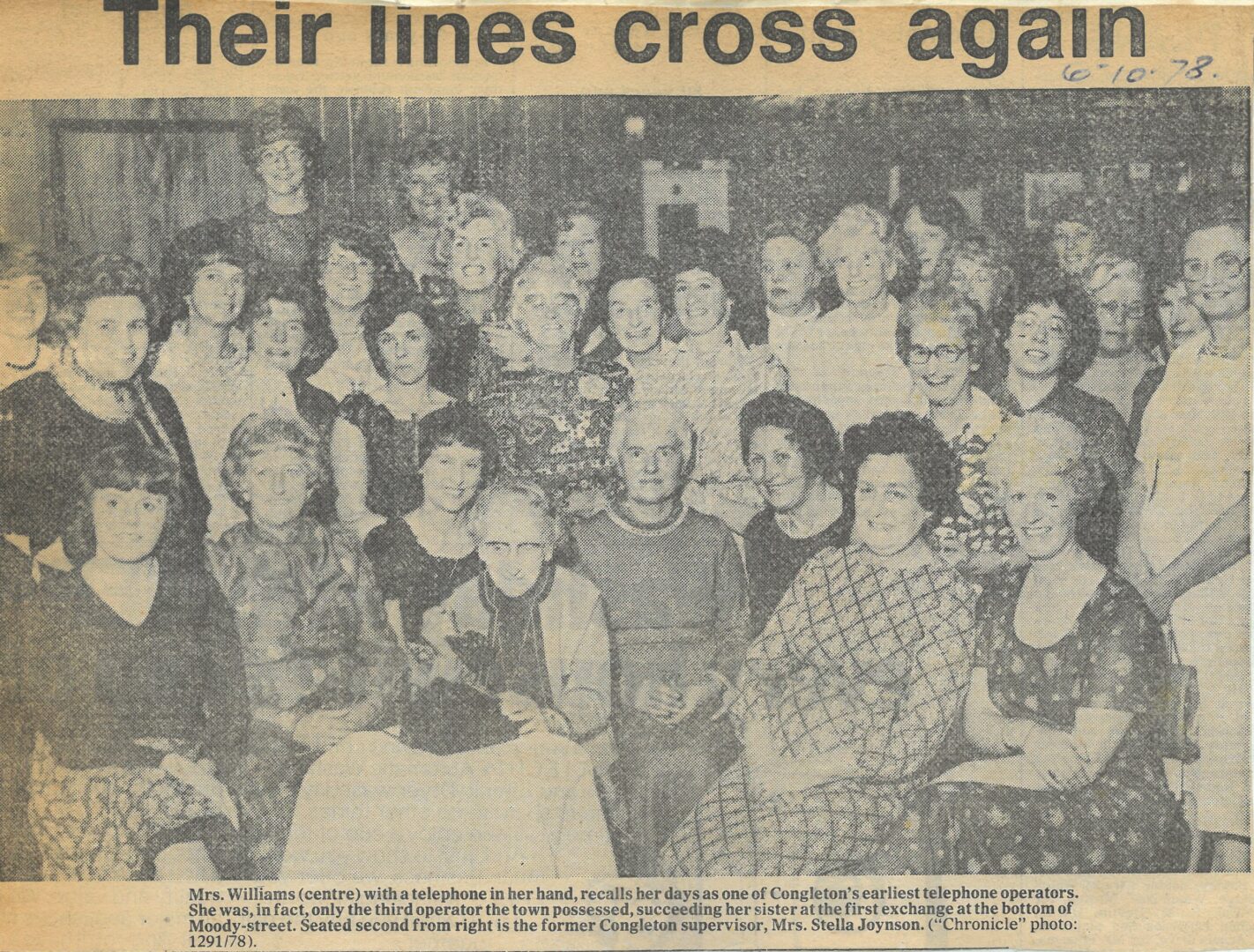
Pam left the Macclesfield Exchange in 1964 and went to work at a Cowlishaw Walker & Co in Biddulph, where they would only employ G.P.O trained telephonists.
This, however, was not the end of the Congleton G.P.O telephone girls. The former G.P.O telephonist from the Congleton direct would often meet up and talk about their day working at the exchange, such as in 1978, when many would reunite at the Bull’s Head Hotel.
The event was organised by Mrs Stella Joynson, Mrs Shirly Williams, and Miss Anne Wilde. The guest of honour was 84-year old Mrs Lillian Williams, who was the second operator to ever be employed at the exchange in 1893.
Women’s History and the UK Workforce
Pam’s memoirs from her time as a G.P.O telephone operator offer insight into local history, particularly Congleton’s community and changing infrastructure during a period of significant technological developments.
However, her story expands the narrative of a much wider picture.
Thoughts of women’s activities throughout history are often restricted to the domestic sphere, from cleaning the household to raising children.
Although these tasks are important in themselves, Pam’s experience adds an extra layer to the story of women’s history, offering further insight into women’s involvement in the UK labour force and their contribution to the growth of the UK economy during the mid-twentieth century.
Do you want to find out about your family history? Congleton Musuem offers bespoke research facilities to help you discover more.
